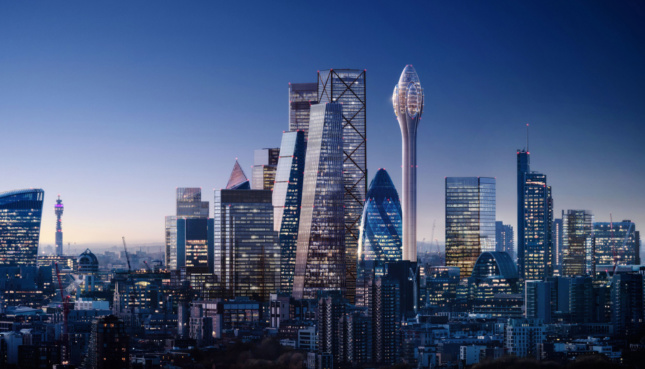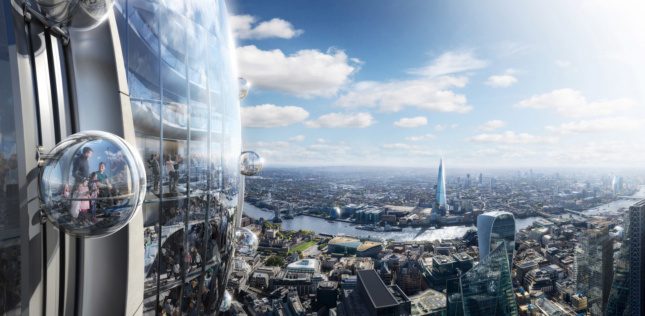An analysis of the Foster + Partners–designed “Tulip,” the 1,000-foot-tall observation tower first proposed for Central London in November of last year, has revealed that the as-is scheme would clash with the London Plan. In its 15-page report, the Greater London Authority (GLA) had “significant concerns with the design approach” and the potential impact on the public’s ability to see the Tower of London.
The London Plan, a strategic planning resource for development across the metropolis, lays out economically and environmentally sustainable development criteria that preserve the city’s heritage. The plan is also a framework for the mayor to consider when considering strategic planning applications submitted to the mayor’s office. As the plan notes, responsibility for reaching the goals therein is shared between the Mayor’s Office, London’s 32 boroughs, and the Corporation of the City of London—with the GLA set up to administer the plan.
In their January 14 review of the Tulip’s strategic planning application, the GLA voiced its concern that the tower failed to comply with the London Plan. The authority pointed out that the scheme conflicts with London Plan Policy 7.7, which mandates that tall buildings set aside a free-to-enter public space (it’s presumed that the Tulip will charge for entry to its bulb-like observation area).

As for the design, which would balance the solid concrete shaft and glass observation topper above a two-story retail podium, the GLA wrote that: “officers have significant concerns with the design approach. The height appears unjustified and the introduction of significant expanse of solid and inactive building frontage would appear incongruous in the existing faceted context of the Eastern Cluster, drawing significant attention in this heritage sensitive location.”
The report goes on to note that the planning application made use of pedestrian numbers from 2015 as opposed to a 2025 forecast, and that as such, “The proposals are considered to result in a poor quality, unwelcoming, unnecessarily confined pedestrian environment contrary to Policy 6.10 of the London Plan and Policy to D1 of the draft London Plan. The proposals would not reflect the Healthy Streets approach detailed within Policies T2 and T4 of the draft London Plan. The level of cycle parking would not accord with draft London Plan Policy T5.”
The Tulip’s impact on the sightlines for historic buildings was also called into question.
This isn’t the first time official concerns have been raised over the building, as the London City Airport requested that construction be postponed until it could study how the gondola pods on the observation bulb’s exterior would impact its radar systems.

In response to the GLA report, Foster + Partners released the following statement to the Architects’ Journal: “We are pleased to see that the mayor of london considers the use of a visitor attraction as complementing the City.
“We welcome the detailed technical comments by GLA officers and, as part of the ongoing planning process, we will continue to work closely with the City of London Corporation and the GLA to resolve those matters raised and to improve the package of public benefits associated with the Tulip.”
If construction proceeds as scheduled, the Tulip is expected to break ground in 2020 and open to the public in 2025.











